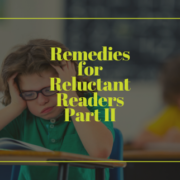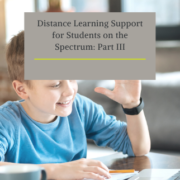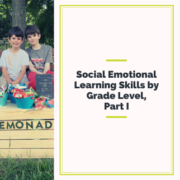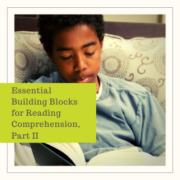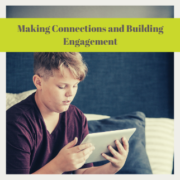Signs of Dyslexia by Grade Level
According to the International Dyslexia Association, anywhere from 15-20% of the world’s population has a reading disability marked by symptoms of or relating to dyslexia. Since it is a language-based learning disability, dyslexia can impact a child’s reading, writing, and speech in various ways. While the symptoms and signs are vastly different from one learner to another, there are age or grade-specific indicators that parents can make note of for future discussions with doctors, special educators and specialists, if necessary. These are by no means tell-tale signs that your child has a learning disability; however, they could be reason enough to seek an evaluation by a professional.
Pre-K
Before kindergarten, many children are just beginning to explore language in all forms. With that exploration comes inevitable blunders—young learners will mispronounce and misspell words quite frequently—but this is no cause for concern. Instead, early signs of dyslexia in toddlers and preschoolers are often of the auditory form, meaning that parents will hear these subtle issues before they’ll see it. Listen for the following:
- Children may tell a story out of order or even retell a story or scenario that does not fit a chronological sequence.
- They may also lack transition words or phrases, such as first, then, after, later, last, etc., when telling a story.
- Children with early signs of dyslexia may begin speaking noticeably later than their peers. They may speak only in certain situations when prompted and/or only when they feel comfortable.
- They may forget common words for everyday items or concepts.
- They may be unable to grasp simple rhyming concepts, even with single syllables, such as dime, time, lime, crime, etc.
- They may orally mix up syllables for common or everyday words. For instance, they may say “listpick” instead of “lipstick” or “caxi tab” instead of “taxi cab.”
- They may add unnecessary or nonexistent vowels to consonant blends when pronouncing certain words. Here is what that might sound like:
- “Fullufy” for fluffy
- “Beraid” for braid
- “Gulasses” for glasses
- “Falower” for flower
- “Sinack” for snack
- “Sakunk” for skunk
- “Teruck” for truck
- Conversely, early learners may also have difficulty separating sounds, as well as blending them. If a child struggles to distinguish the two sounds in the word “no,” nnnnn—oooo, then there could be a potential problem.
Elementary Age
Since children are under somewhat of a language microscope in their early elementary years, dyslexia is more often diagnosed during this time. These are the formative years in terms of reading and writing, which is why it is that much more obvious when a child is struggling with a language disability. Signs include:
- Difficulties pertaining to phonics, meaning the relationship between letters and sounds; they may pronounce p as b or d.
- Elementary-aged children may struggle to read sight words, which are high-frequency words that appear in everyday reading and writing. These words are typically abstract and essentially have to be memorized, meaning that they do not have physical images to accompany them or their spelling. The expectation is that students will memorize and recognize these words automatically as they learn to read and write. Examples of some sight words include and, or, the, of, is, with, but, that, by, if, can, were, them, was, has, so, etc.
- While reading, students may substitute certain words while reading or spelling. These are often synonymous terms or words that are in the wheelhouse of the intended term, such as “mom” instead of mother, or “home” as opposed to house, “kid” instead of child, etc.
- Some learners may invert numbers or confuse mathematical signs; they may confuse a multiplication sign for an addition sign or a subtraction sign for a division sign, etc.
- They may invert letters when writing or reading. This often occurs with letters such as m and w, n and u, p and d, q and b, and s and z.


